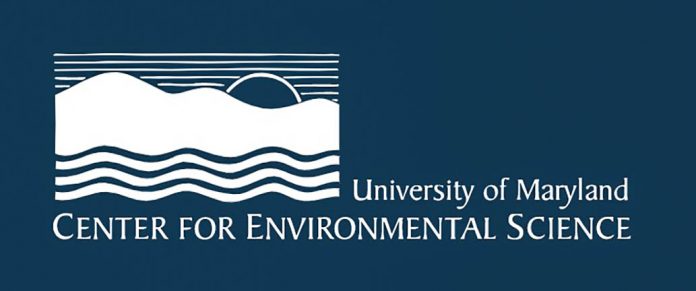By Stefanie Jackson – The Chesapeake Bay’s health score returned to a grade of C in 2020, after it had dropped to a C- in 2019, according to a June 22 press release from the University of Maryland Center for Environmental Science (UMCES).
UMCES also graded the health of the Chesapeake Bay watershed, which received a B- for the second year in a row.
Virginia Secretary of Natural Resources Matthew Strickler, who also chairs the Chesapeake Executive Council principals’ staff committee, said,” The UMCES report card illustrates continued progress but also makes clear that bold leadership and significant investment are needed to achieve the partnership’s commitment to a restored Chesapeake Bay.”
He called on Congress to dedicate $1 billion for the Chesapeake Bay so “future generations will benefit from clean water and abundant living resources.”
Even though individual indicators of the Chesapeake Bay’s health provided “mixed results” in 2020, the bay’s condition is improving overall, the release stated.
Additionally, 7 of 15 Chesapeake Bay regions showed significantly improving health trends.
“Our close collaboration with partners at the federal, state, and local levels will continue to improve the long-term vitality of the Chesapeake Bay,” said Maryland U.S. Rep. John Sarbanes, co-chair of the Chesapeake Bay Watershed Task Force.
The Chesapeake Bay’s health scores worsened in some areas but improved in others.
There were slight decreases in scores for water clarity, aquatic grass, and the benthic community – creatures like clams and crabs that live at the bottom of the bay.
The Chesapeake Bay’s scores for dissolved oxygen and total nitrogen improved. Oxygen dissolved in the water is needed to support aquatic life; nitrogen is also needed, but excess nitrogen in the water causes algae to grow too quickly for the ecosystem to handle.
(There was less nitrogen in the atmosphere in 2020 due to reduced travel during the COVID-19 pandemic, but the impacts of the COVID-19 pandemic on the health of the Chesapeake Bay remain unknown.)
The Chesapeake Bay’s scores for chlorophyll and phosphorous worsened. Like nitrogen, phosphorus is essential to aquatic life, but too much leads to overgrowth of algae – known as algae blooms – and depletion of dissolved oxygen.
However, predictions about Chesapeake Bay “dead zones” created by algae blooms – where oxygen is scarce and plants and animals often can’t survive – are positive.
The annual Chesapeake Bay dead zone forecast is prepared by researchers from UMCES, the Chesapeake Bay Program, the University of Michigan, and the U.S. Geological Survey.
UMCES stated in a June 23 press release that researchers predicted the Chesapeake Bay’s dead zone will be 14% lower than average this year, compared to the previous 35 years.
The term “dead zone” refers to the Chesapeake Bay’s hypoxic volume – an area with low oxygen.
The Virginia Institute of Marine Science reported in 2020 that the Chesapeake Bay dead zone is smaller than 80% of those monitored since 1985.
The Chesapeake Bay’s anoxic volume – an area with no oxygen – is predicted to be 18% lower than average this year.
A smaller dead zone was predicted “because the river flows that carry nutrients to the Bay were slightly lower than normal,” said Jeremy Testa, an associate professor at UMCES.
“But the amount of nutrients carried to the Bay by a given amount of flow has lessened over time due to effective nutrient management in the watershed,” he added.
Chesapeake Bay Program partners, including Delaware, Maryland, New York, Pennsylvania, Virginia, West Virginia, Washington, D.C., academic institutions, local governments, federal agencies, and non-governmental organizations, “are making a difference in gradually reducing the amount of nutrient and sediment pollutants that are entering the Bay,” the June 23 release stated.
For more information on the Chesapeake Bay health report card, visit www.chesapeakebay.ecoreportcard.org



